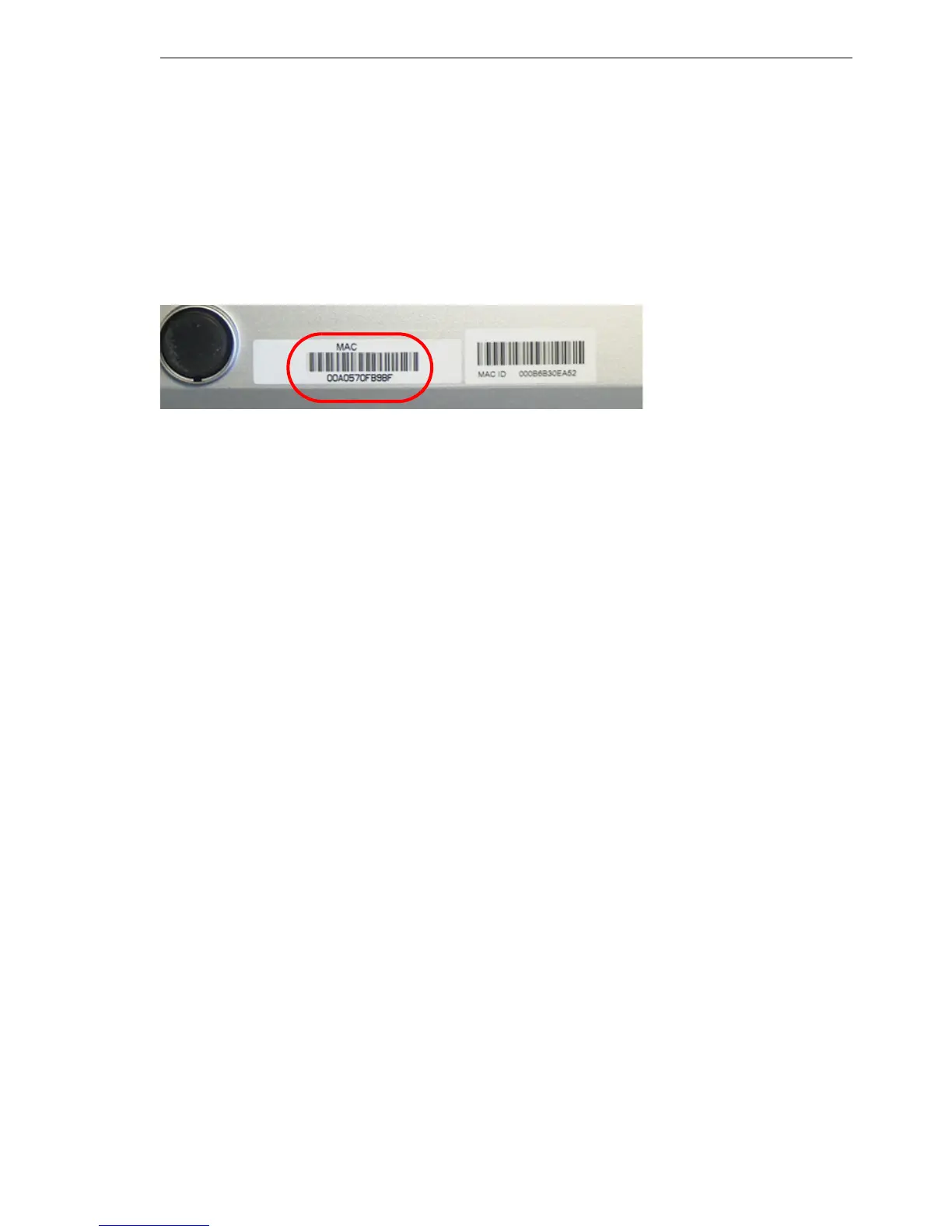Wireless LAN – WLAN
BAT54-Rail/F..
Release
7.54
06/08
3.3
Protecting the wireless network
49
The standard WEP key consists of the first letter “L” followed by the LAN
MAC address of the access point in ASCII characters. The LAN MAC ad-
dresses of the BAT devices always begin with the character string “00A057”.
You will find the LAN MAC address on a sticker on the base of the device.
Only use the character string labelled as “MAC address” that starts with
“00A057”. The other addresses that may be found are not the LAN MAC ad-
dress.
A device with the LAN MAC address “00A0570FB9BF” thus has a standard
WEP key of “L00A0570FB9BF”. This key is entered into the ‘Private WEP
settings’ of the device for each logical WLAN network as ‘Key 1’.
Note: To use a WLAN client to connect to a new (unconfigured) BAT access
point, the WEP128 encryption must be activated in the WLAN client and
the 13-character standard WEP key must be programmed in as described
above.
3.3.3 Background WLAN scanning
In order to identify other access points within the device's local radio range,
the BAT Wireless Router can record the beacons received (management
frames) and store them in the scan table. Since this recording occurs in the
background in addition to the access points' "normal" radio activity, it is called
a "background scan".
Background scanning is mainly used for the following tasks:
D Rogue AP detection
D Fast roaming for WLAN clients
U Rogue AP detection
WLAN devices that make unauthorized attempts at accessing a WLAN by
posing as an access point or client are called rogues. An example of rogue
APs are access points that a company's employees connect to the network
without the knowledge or permission of the system administrators, thereby
consciously or unconsciously making the network vulnerable to potential at-

